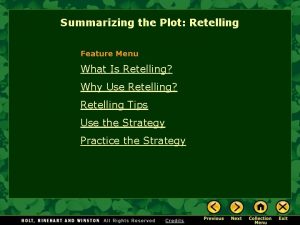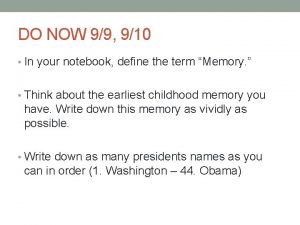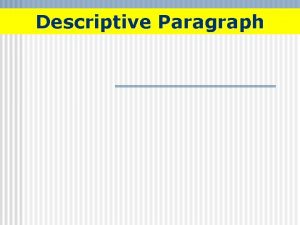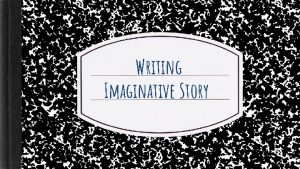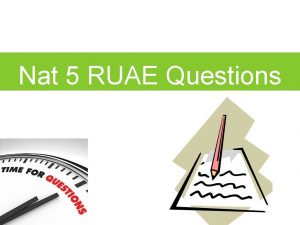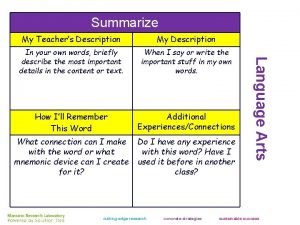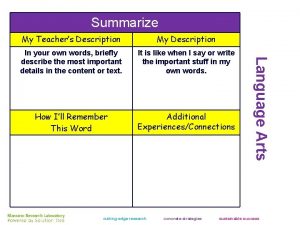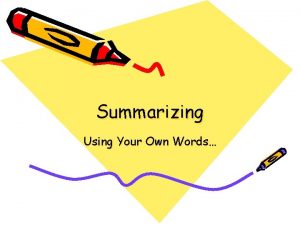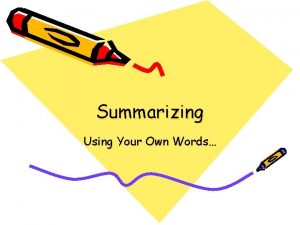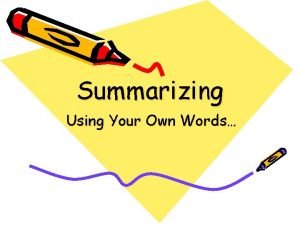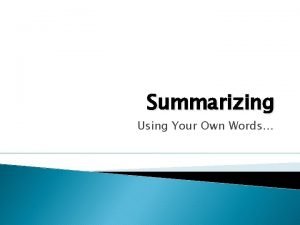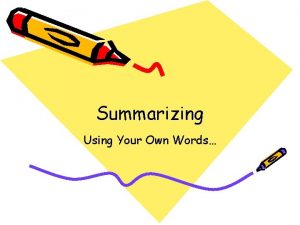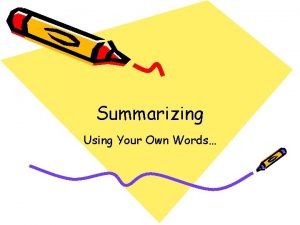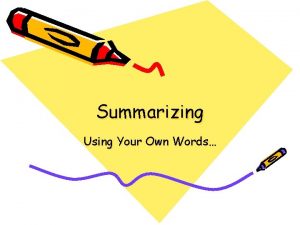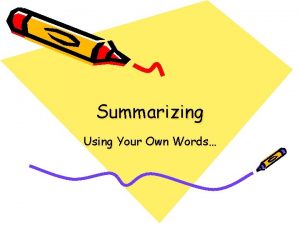Summarizing Using Your Own Words Summarizing Why do











- Slides: 11

Summarizing Using Your Own Words…

Summarizing Why do it? Comprehension: • To reduce information to essential ideas in order to: – Understand learn important information Communication: • To reduce information to essential ideas in order to: – Expand the breadth or depth of your writing

The Process… Using the “MIDAC Touch!”

M Main Idea I D A C Important Details Disregard Trivial Information Analyze Repeated Information Collapse, Categorize, and Label Important Information

Main Idea • Determine the topic. • Considers the author’s purpose. • Look for the stated main idea in the first (75%) or last sentence (informational only). • Use the basic signal words to help infer the main idea (who, what, where, when, why, how).

Using basic signal words… WHO? (subject) WHAT? (action) WHERE? (location) WHEN? (time) WHY? (reason) HOW? (process)

Important Details • Use text features: headings, bold print, pictures, charts, maps, and italicized words. • Look for key words and phrases related to the main idea (supporting details).

Main Idea Supporting Detail

Disregard Trivial Information • Consider how the information is related to the main idea. • DO NOT include less important information such as descriptive words, examples, and/or explanations!

Analyze Repeated Information • Look through the key words and phrases that are important. • Ask yourself, “Has the author repeated any of the information, but said it a different way? ” • DO NOT repeat information in a summary!

Collapse, Categorize, and Label Important Information • Determine if the information needs to be collapsed and categorized. • Group and label important information.
 Duffy's jacket plot diagram
Duffy's jacket plot diagram Using your own words
Using your own words In your notebook,define the following
In your notebook,define the following Analytical sae examples
Analytical sae examples Pictures
Pictures Kitchen description paragraph
Kitchen description paragraph What is
What is Making new words your own lesson 20
Making new words your own lesson 20 How to answer ruae questions
How to answer ruae questions Description in your own words
Description in your own words Description in your own words
Description in your own words Describe the dream that romeo has just had
Describe the dream that romeo has just had
